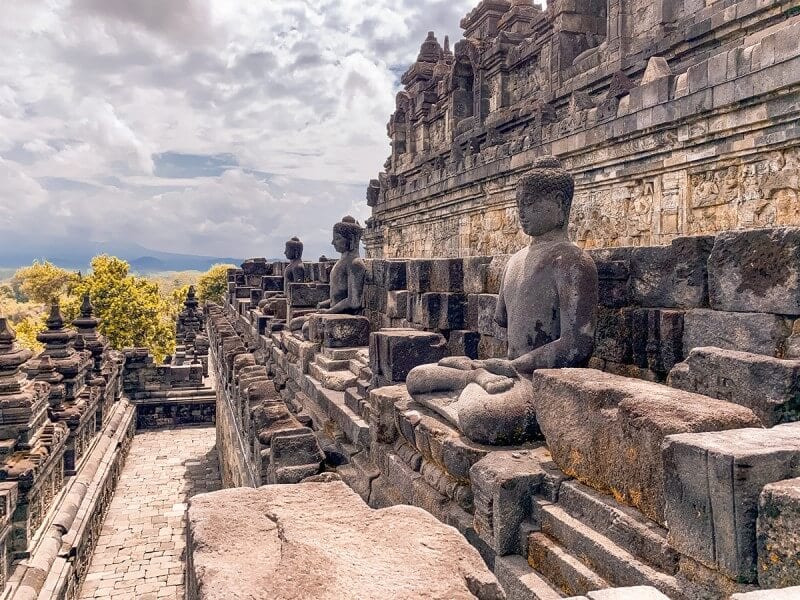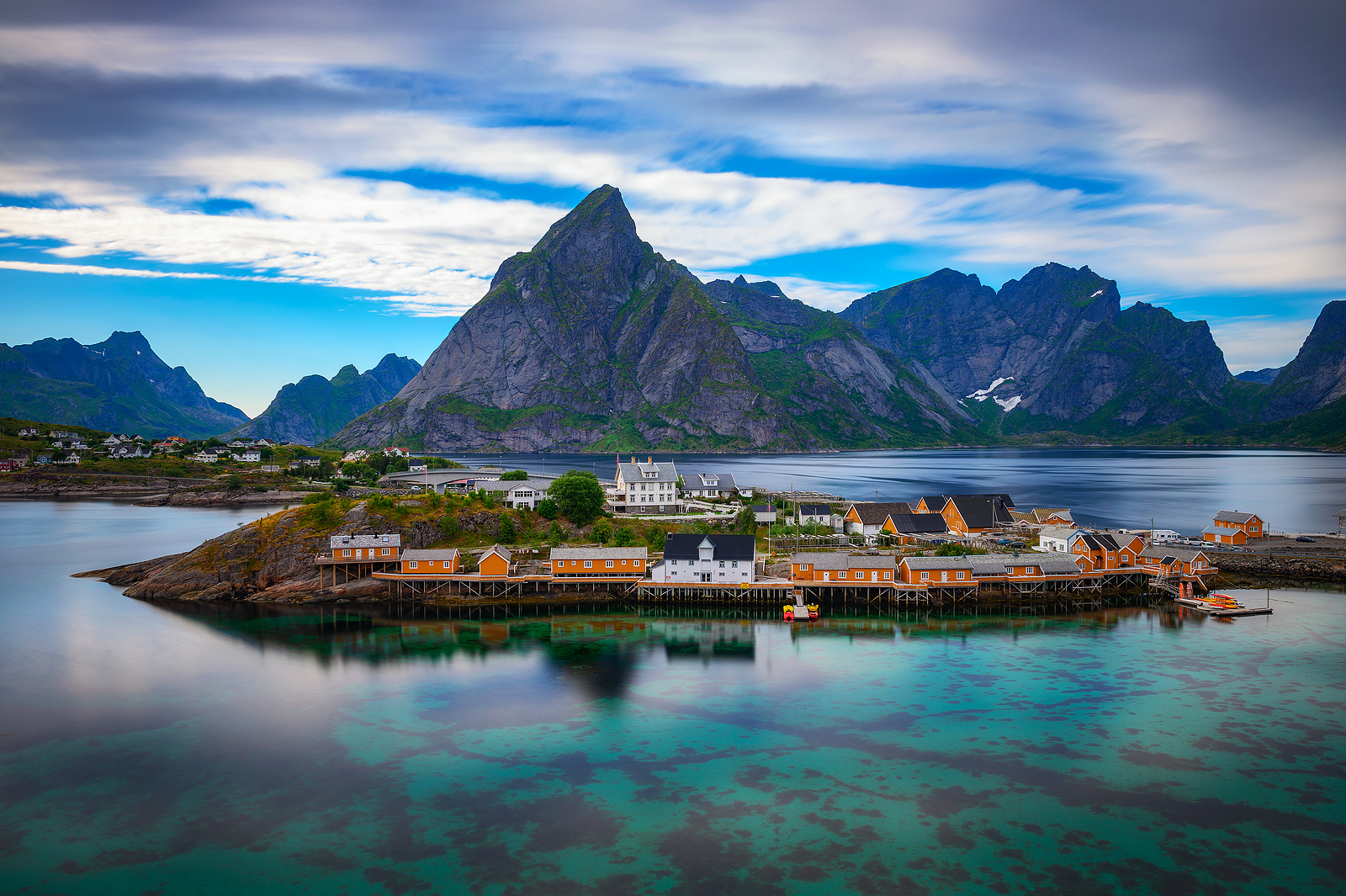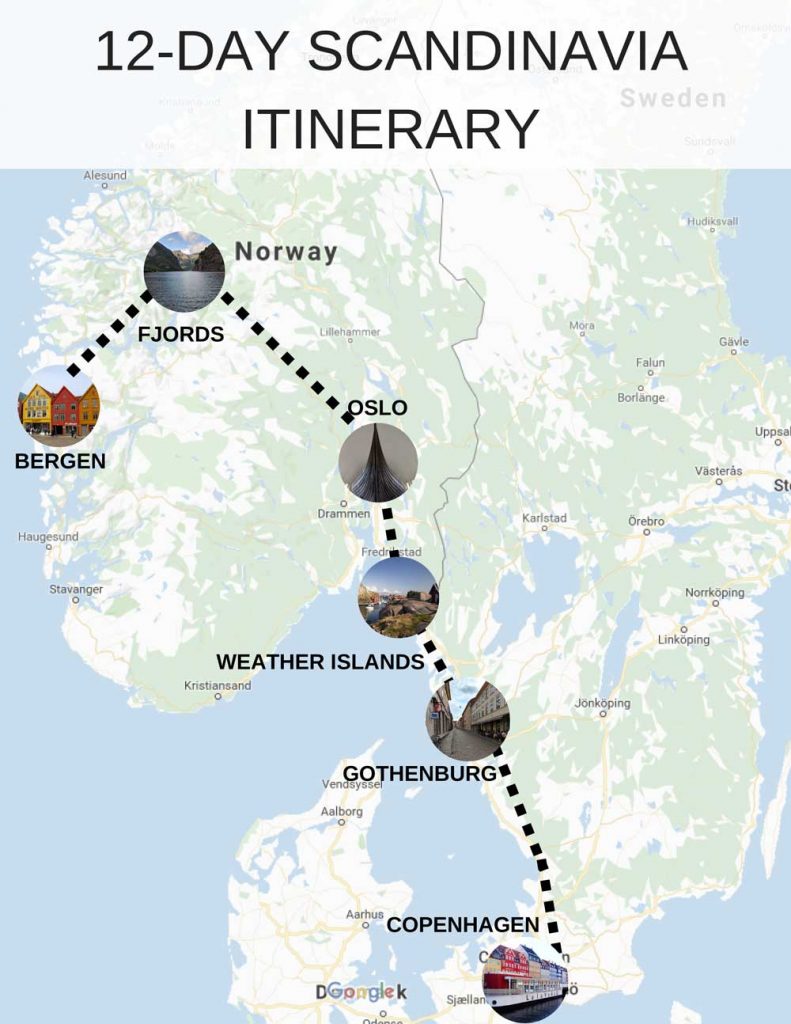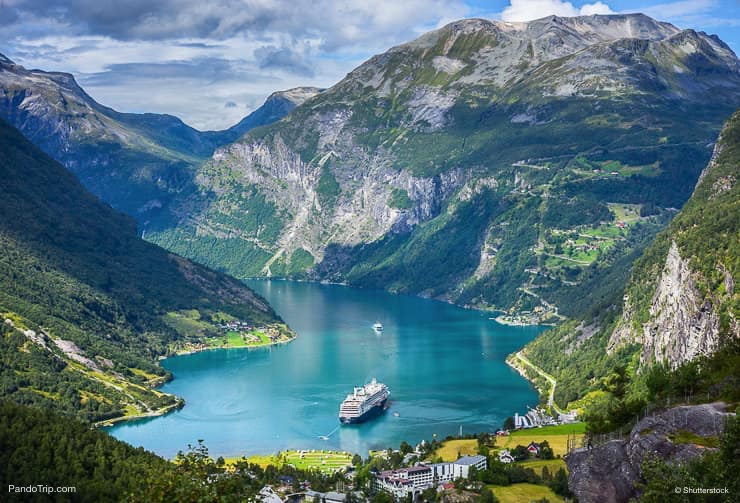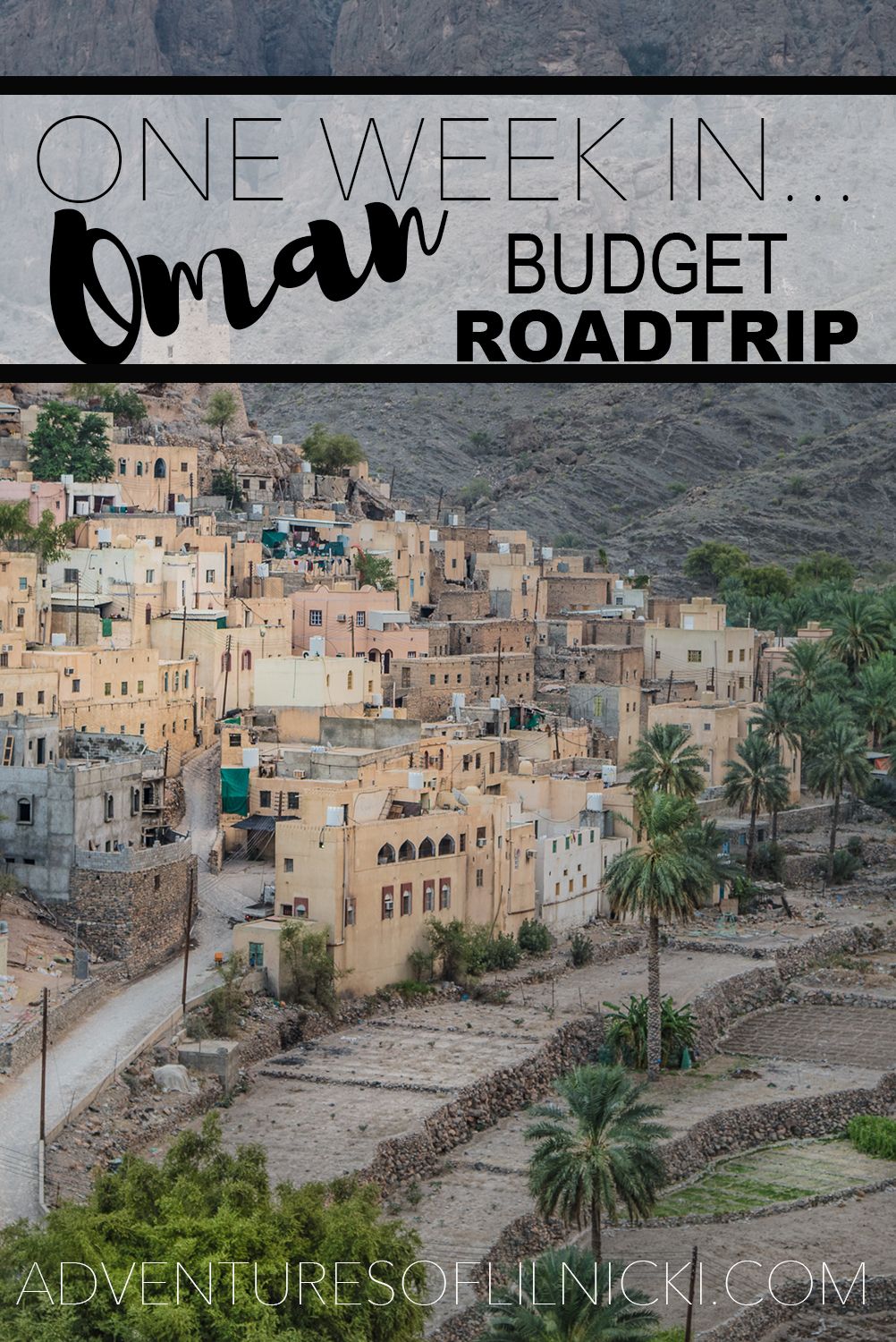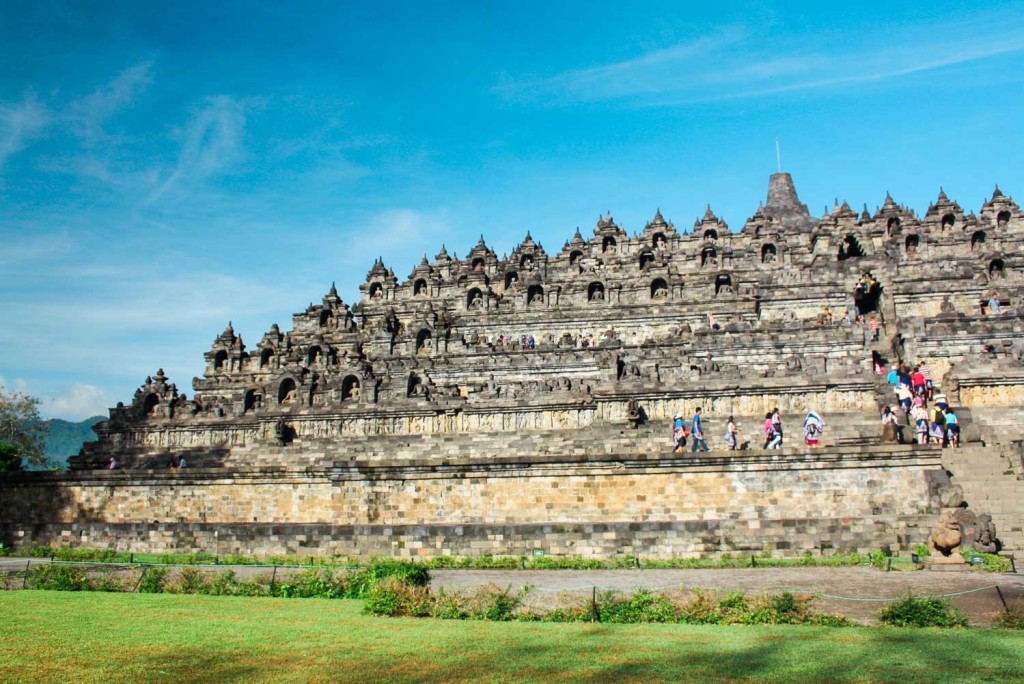
Nestled amidst the lush volcanic landscapes of Central Java, Indonesia, stands Borobudur Temple, a UNESCO World Heritage site and a testament to the architectural and spiritual prowess of ancient civilizations. More than just a historical monument, Borobudur is a pilgrimage, a journey through stone reliefs that narrate tales of Buddhist cosmology and human enlightenment. Visiting this magnificent edifice is an experience that transcends mere sightseeing; it’s an immersion into history, spirituality, and the vibrant culture of Indonesia.
This comprehensive guide will equip you with everything you need to know to embark on your unforgettable journey to Borobudur Temple, from its captivating history to practical travel tips and the best ways to experience its magic.
A Glimpse into History: The Rise and Rebirth of Borobudur
Related Articles about A Journey to the Celestial City: Your Essential Guide to Visiting Borobudur Temple:
- Unveiling the Maya Majesty: Your Essential Travel Guide to Chichen Itza
- Discovering the Jewels of Malaysia: An Ultimate Travel Guide
- Vienna: Where Imperial Grandeur Meets Modern Luxury in an Unforgettable Stay
- Patagonia: A Symphony of Ice, Wind, and Wildness – Your Essential Travel Guide
- Sweden: A Symphony of History, Nature, and Modernity – Your Ultimate Guide to the Land of the Midnight Sun
The story of Borobudur is as intriguing as its architecture. Believed to have been constructed between the 8th and 9th centuries AD during the reign of the Sailendra Dynasty, Borobudur is the largest Buddhist temple in the world. Its creation is thought to have been a monumental undertaking, requiring the labor of thousands and the skillful artistry of countless craftsmen.
The temple’s original purpose remains a subject of scholarly debate. Some believe it was a place of worship for Mahayana Buddhists, a spiritual center for pilgrimage and meditation. Others propose it served as a symbolic representation of Mount Meru, the mythical abode of the gods in Buddhist cosmology. Regardless of its precise function, its sheer scale and intricate carvings suggest a profound spiritual and cosmological significance.
For reasons not entirely clear, Borobudur was gradually abandoned and eventually fell into disuse, becoming overgrown by jungle and volcanic ash. It lay hidden for centuries, its existence largely forgotten by the outside world. Its rediscovery in the early 19th century by Sir Thomas Stamford Raffles, then the British governor of Java, marked the beginning of its slow but steady restoration. Extensive excavation and reconstruction efforts, spanning decades and involving international collaboration, have brought Borobudur back to its former glory, allowing us to marvel at its grandeur today.
Main Attractions: A Symphony of Stone and Spirituality
Borobudur is not a single monolithic structure, but rather a complex, tiered monument that unfolds like a cosmic map. Its design is meticulously planned, guiding visitors on a spiritual ascent from the earthly realm to the heavens.
-
The Base (Kamadhatu): This is the lowest level, often referred to as the "hidden foot." It features a series of bas-reliefs depicting scenes of earthly desires, karma, and the consequences of actions. These reliefs were intentionally covered during later renovations, adding an element of mystery and suggesting that perhaps only the enlightened were meant to see them. While not directly accessible, their stories are fundamental to understanding the temple’s narrative.
-
The First Seven Terraces (Rupadhatu): These levels are adorned with thousands of narrative reliefs that illustrate the life of the Buddha, from his birth to his enlightenment and subsequent teachings. As you ascend, the reliefs become more abstract and symbolic, representing the transition from the material world to the spiritual. Each panel is a masterpiece of ancient Javanese art, offering a visual chronicle of Buddhist philosophy and the journey towards Nirvana.
- The Jataka Tales: A significant portion of the narrative reliefs depict the Jataka tales, stories of the Buddha’s previous lives, emphasizing his virtues and the path to enlightenment.
- The Avadana Tales: These tales complement the Jataka stories, further illustrating the principles of karma and compassion.
-
The Upper Three Circular Terraces (Arupadhatu): These levels symbolize the realm of formlessness, representing ultimate spiritual freedom. They are characterized by their simplicity and serenity.
- The Stupas: The circular terraces are dotted with numerous perforated stupas, each housing a statue of the Buddha. The number of stupas decreases as you ascend, culminating in the central, largest stupa.
- The Central Stupa: This magnificent, unadorned stupa crowns the temple and is believed to represent Nirvana. Standing at its base and gazing upwards is a profoundly moving experience.
-
The Bell-Shaped Stupas: Scattered throughout the upper terraces are smaller, bell-shaped stupas, each pierced with holes, revealing the serene Buddha statues within. These stupas are a distinctive feature of Borobudur, symbolizing the interconnectedness of all things.
-
The Statues of the Buddha: Over 500 Buddha statues are housed within the temple, many seated in the meditation posture (Dhyana Mudra). Their serene expressions and peaceful presence contribute to the temple’s tranquil atmosphere.
-
The Panoramic Views: From the upper levels of Borobudur, you are rewarded with breathtaking panoramic views of the surrounding landscape, including the lush green rice paddies, distant volcanoes like Mount Merapi and Mount Merbabu, and the serene Progo River valley. Sunrise and sunset at Borobudur are particularly magical, painting the sky with vibrant colors and casting a golden glow over the ancient stones.
Travel Tips for a Memorable Visit
To make the most of your Borobudur experience, consider these practical tips:
- Book in Advance: Especially during peak seasons, booking your temple entrance tickets and accommodation in advance is highly recommended.
- Dress Respectfully: Borobudur is a sacred site. Dress modestly, covering your shoulders and knees. Scarves are often provided for rent or sale at the entrance if needed.
- Wear Comfortable Shoes: You’ll be doing a lot of walking and climbing. Comfortable walking shoes are essential.
- Stay Hydrated: The Javanese climate is warm and humid. Carry plenty of water.
- Hire a Local Guide: To truly appreciate the intricate carvings and understand the stories they tell, hiring a knowledgeable local guide is invaluable. They can offer insights into the history, mythology, and symbolism of the temple.
- Sunrise or Sunset Experience: Visiting during sunrise or sunset offers a magical ambiance and stunning photographic opportunities. Be prepared for crowds, especially at sunrise.
- Patience and Mindfulness: Borobudur is a place of contemplation. Take your time, wander through the corridors, and soak in the atmosphere.
- Photography: While photography is allowed, be mindful of not using flash, especially near the Buddha statues. Respect the sanctity of the site.
- Beware of Vendors: You may encounter vendors selling souvenirs. Be polite but firm if you are not interested.
- Keep it Clean: Help preserve this historical treasure by not littering.
The Best Time to Visit Borobudur
The best time to visit Borobudur is generally during the dry season, which runs from April to October. During these months, you can expect less rain and more sunshine, making it ideal for exploring the temple and enjoying the surrounding scenery.
- Shoulder Seasons (April-June and September-October): These months offer a good balance of pleasant weather and fewer crowds compared to the peak of the dry season.
- Peak Season (July-August): This is the busiest period, with the highest number of international and domestic tourists. While the weather is excellent, expect larger crowds and potentially higher prices for accommodation.
- Rainy Season (November-March): While it can rain, showers are often brief and followed by sunshine. This season offers fewer crowds and lush green landscapes. However, some outdoor activities might be affected by the weather.
Sunrise and Sunset: Regardless of the season, aiming for a sunrise or sunset visit will enhance your experience. The soft light and changing colors create a truly magical atmosphere.
Where to Stay: Accommodations Near Borobudur
Borobudur offers a range of accommodation options to suit different budgets and preferences. Most hotels are located in the surrounding villages, providing easy access to the temple.
-
Luxury Hotels:
- Plataran Borobudur Resort & Spa: Offers luxurious villas with stunning views of the temple and surrounding countryside.
- Sudamala Resort, Borobudur: A tranquil retreat with beautiful rooms and a focus on wellness.
-
Mid-Range Hotels:
- Hotel Borobudur: A comfortable and convenient option located close to the temple entrance.
- Yogyakarta Village: Offers charming bungalows and a peaceful atmosphere.
- Griya Persada Hotel: A good option with comfortable rooms and friendly service.
-
Budget-Friendly Guesthouses and Homestays:
- Numerous guesthouses and homestays in the villages surrounding Borobudur offer affordable and authentic experiences. These provide an opportunity to interact with local families and gain a deeper understanding of Javanese culture.
Staying in Yogyakarta: For those who prefer to be based in a larger city with more amenities and attractions, Yogyakarta is a popular choice. It’s about a 1-1.5 hour drive to Borobudur, making day trips feasible. Yogyakarta offers a vast array of hotels, from boutique to international chains.
A Taste of Java: Local Food to Savor
Exploring Borobudur is also an opportunity to indulge in the delicious flavors of Javanese cuisine.
- Nasi Goreng: Indonesia’s national dish, fried rice, is a staple and comes in countless variations.
- Mie Goreng: Similar to nasi goreng, but with fried noodles.
- Gudeg: A traditional Javanese dish made from young jackfruit stewed in coconut milk and palm sugar, often served with rice and chicken. It has a sweet and savory flavor profile.
- Sate Ayam/Kambing: Grilled skewers of chicken or lamb, marinated in a rich peanut sauce.
- Tempeh: A fermented soybean cake, a healthy and versatile ingredient often fried or used in stews.
- Es Dawet: A refreshing Javanese dessert made with coconut milk, palm sugar, and pandan jelly.
- Kopi Jos: A unique Yogyakarta specialty, coffee with a piece of hot charcoal dropped into it, believed to neutralize acidity and add a smoky flavor.
Don’t miss the opportunity to try local snacks and fruits from roadside vendors for an authentic culinary adventure.
Getting There: Transportation Options
Borobudur is accessible from various points in Indonesia, with the most common starting point being Yogyakarta.
-
From Yogyakarta:
- Private Car/Taxi: The most convenient option. You can hire a car with a driver for a day trip, which allows for flexibility and comfort. Prices can vary, so negotiate beforehand.
- Tour Operators: Many tour operators in Yogyakarta offer organized day trips to Borobudur, often including transportation, guide services, and sometimes sunrise tours.
- Public Bus: The most budget-friendly option. Take a local bus from Jombor Bus Terminal in Yogyakarta to Borobudur town. This journey can take around 1-1.5 hours and is a great way to experience local life. From Borobudur town, you can take a short local transport (ojek or becak) to the temple.
- Scooter Rental: If you’re an experienced rider, renting a scooter in Yogyakarta offers the freedom to explore at your own pace. Ensure you have the necessary international driving permits.
-
From Jakarta:
- Flight to Yogyakarta: The quickest way to reach Yogyakarta from Jakarta is by flying. Numerous daily flights operate between the two cities. From Yogyakarta, follow the options mentioned above.
- Train to Yogyakarta: A scenic and comfortable option, though longer than flying. Trains depart from Gambir Station in Jakarta.
-
From Other Cities in Java:
- Similar to Jakarta, you can fly or take a train to Yogyakarta from major cities like Surabaya or Bandung.
Getting to the Temple from Borobudur Town: Once you arrive in Borobudur town, you can walk to the temple (about 15-20 minutes) or take a short ride on a local mode of transport like an ojek (motorcycle taxi) or becak (cycle rickshaw).
Beyond the Temple: Exploring the Surrounding Area
While Borobudur is the main draw, the surrounding region offers further attractions:
- Prambanan Temple: Another UNESCO World Heritage site, this magnificent Hindu temple complex is located about 1 hour and 15 minutes from Borobudur and is a must-visit if you have time.
- Merapi Volcano: For the adventurous, a jeep tour or hike on Mount Merapi offers thrilling experiences and stunning views.
- Selo Village: A charming village offering cooler temperatures and beautiful views of Mount Merapi.
- Candirejo Village: Experience traditional Javanese village life, with opportunities to see local crafts and farming practices.
A Journey of Discovery
Visiting Borobudur Temple is more than just ticking off a landmark on your travel itinerary. It’s an opportunity to connect with history, to contemplate spiritual journeys, and to witness the enduring legacy of human ingenuity and devotion. As you ascend its ancient tiers, each stone whispering stories of a bygone era, you’ll find yourself transported to a celestial city, a place where art, architecture, and spirituality converge to create an experience that will stay with you long after you depart. Prepare to be awestruck, enlightened, and deeply moved by the profound beauty and timeless wisdom of Borobudur.
